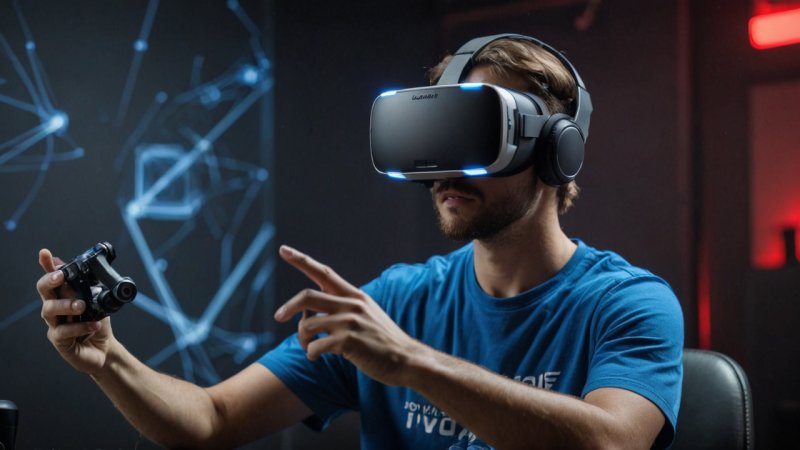Virtual reality (VR) is no longer just a futuristic concept; it's a transformative force in the gaming industry. By immersing players into 3D environments, VR creates experiences that traditional gaming simply can't match. This technology is reshaping how we engage with games, offering unprecedented levels of interactivity and immersion that appeal to gamers of all ages.
The core of VR's appeal lies in its ability to transport players to entirely new worlds. With a VR headset, users can look around and interact with their surroundings as if they were truly present in the game environment. This level of immersion creates a sense of presence that makes every gaming session feel like a unique adventure. For instance, in VR titles like Beat Saber and Half-Life: Alyx, players can physically move, duck, and swing as they engage with gameplay, making the experience more dynamic and engaging.
Developers are also taking advantage of VR’s capabilities to create more complex and captivating narratives. Games are no longer just about completing objectives; they’re about experiencing stories from within. Players can explore intricate worlds, interact with characters, and influence outcomes based on their decisions. This depth of storytelling adds layers to gameplay, transforming how players connect with the narrative.
Moreover, VR technology is encouraging social interactions in gaming. Multiplayer VR games, like Rec Room and VRChat, allow friends and strangers to connect in shared virtual spaces. Players can meet, chat, and compete in real-time, regardless of their physical location. This social aspect has made gaming more community-oriented, bridging gaps between individuals and creating friendships that extend beyond the virtual world.
The gaming industry is also seeing a surge in VR esports. Competitive gaming is evolving as players test their skills in VR environments, where physicality and strategy play significant roles. Tournaments are being organized, and VR games are gaining recognition in the esports arena, attracting both players and spectators. This evolution is expanding the definition of competitive gaming, introducing exciting possibilities for players and fans alike.
Accessibility is an important consideration as VR continues to grow. Manufacturers are working on making VR hardware more affordable and user-friendly. The introduction of standalone headsets like the Oculus Quest has eliminated the need for expensive gaming PCs, allowing more gamers to experience VR without significant financial investment. As the technology becomes more accessible, the potential for widespread adoption increases, paving the way for more innovative gaming experiences.
However, some challenges remain. Issues such as motion sickness and the need for physical space can deter potential users. Developers are actively addressing these concerns by creating games that minimize discomfort and providing guidelines for safe play spaces. As the technology matures, these obstacles are likely to be overcome, further enhancing the appeal of VR gaming.
In conclusion, virtual reality is revolutionizing the gaming landscape by offering immersive experiences, engaging storytelling, social interactions, and competitive opportunities. As this technology continues to evolve, it will undoubtedly shape the future of gaming, attracting new audiences and redefining what it means to play games. Gamers can look forward to an exciting future where the boundaries of reality blur, creating unforgettable gaming experiences.
How Virtual Reality is Revolutionizing Gaming
Discover how virtual reality is transforming the gaming industry with immersive experiences and interactive storytelling.






